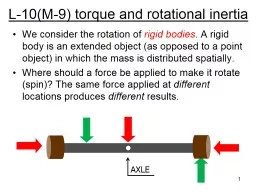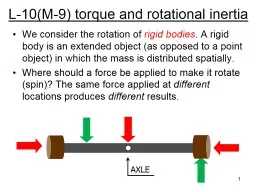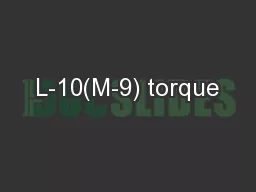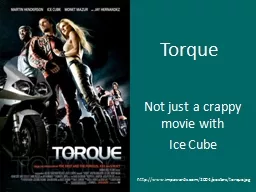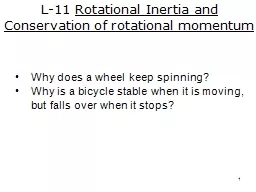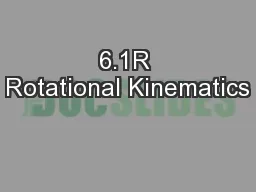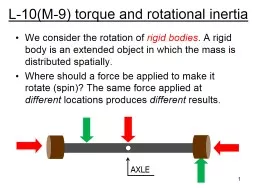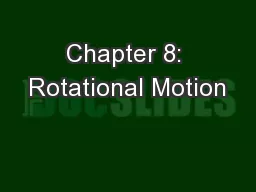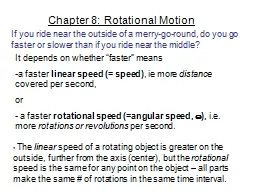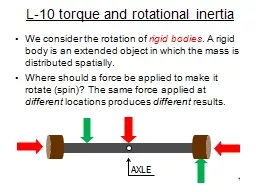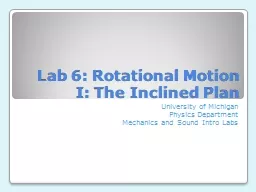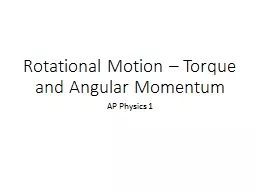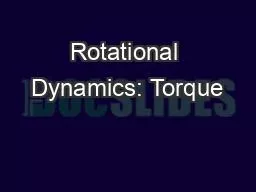PPT-L-10(M-9) torque and rotational inertia
Author : myesha-ticknor | Published Date : 2017-09-08
We consider the rotation of rigid bodies A rigid body is an extended object as opposed to a point object in which the mass is distributed spatially Where should
Presentation Embed Code
Download Presentation
Download Presentation The PPT/PDF document "L-10(M-9) torque and rotational inertia" is the property of its rightful owner. Permission is granted to download and print the materials on this website for personal, non-commercial use only, and to display it on your personal computer provided you do not modify the materials and that you retain all copyright notices contained in the materials. By downloading content from our website, you accept the terms of this agreement.
L-10(M-9) torque and rotational inertia: Transcript
Download Rules Of Document
"L-10(M-9) torque and rotational inertia"The content belongs to its owner. You may download and print it for personal use, without modification, and keep all copyright notices. By downloading, you agree to these terms.
Related Documents

